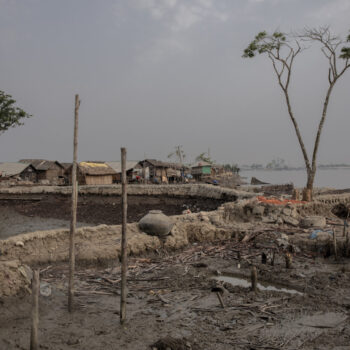Major development banks, including the World Bank, are lagging behind some of the big international corporations in disclosing their carbon footprints.
Given that these large institutions are publicly funded, they ought to be taking the lead on these issues – especially as virtually all governments have agreed to take action on climate change under the Paris Agreement.
A host of companies are already reporting on their direct and indirect emissions and setting science-based climate targets. This includes several large companies. Kellogg has committed to reduce emissions across its value chain by 20% from 2015-2030, for example, while Sony has a long-term vision of reducing its environmental footprint to zero by 2050.
In contrast, the World Bank and other development banks are currently failing to match up to the private sector in this area. You might ask, is it harder for development banks due to their size? Probably not, since Sony’s total sales and operating revenue were over $67 billion in 2016 – which is actually larger than the World Bank’s total $64 billion commitments in 2016. This shows size should not be a barrier.
The ‘Big Shift’ campaign, recently launched a coalition of groups including Christian Aid and Climate Action Network, is calling on the World Bank to provide greater transparency about its impacts and to phase out fossil fuel funding. The Task Force on Climate-related Financial Disclosures, led by the Governor of the Bank of England, has also recommended banks and insurers disclose all their greenhouse gas emissions. As the old adage goes, “you can’t manage what you don’t measure”. And having the right data is crucial for these banks to better manage their impacts.
Emissions in the Development Banks

Strikingly, given that the World Bank Group is one of the largest development institutions, it appears to be falling behind. The Inter-American Development Bank (IDB), European Bank for Reconstruction and Development (EBRD), and European Investment Bank (EIB) are the leaders among the main six development banks, as they report on their emissions over their portfolio. The Asian Development Bank has recently committed to do this, but the World Bank Group and the African Development Bank still have some way to go.
The development banks are operating in emerging economies with fast-growing emissions, so if they continue to invest in high-carbon infrastructure they will be locking the world into a high-carbon future – contributing to dangerous impacts of climate change. As reported by the New Climate Economy, the existing stock of infrastructure and its use are associated with more than 60% of the world’s total greenhouse gas emissions.
Of course, metrics can be misleading, particularly in terms of what they do and don’t include. For example, fossil efficiency projects can extend the lifetime of otherwise uneconomic plants. While an efficiency upgrade to a power plant may appear to have decreased it’s annual emissions, upgrading could add at least 20 years to a plant’s service, greatly increasing the lifetime emissions and creating a net negative impact on the climate.
The six major development banks have agreed on a common approach, calculating emissions for an average year of operation, which aims to take into account emissions from a longer lifespan. However, this fails to consider that fossil fuel plants may need to close early to prevent dangerous climate change. Even efficient plants will need to be closed to align with a pathway of 2-degrees of global warming.
Recent analysis has found EU and OECD countries would need to stop using coal-fired power plants by 2030, China by 2040 and the rest of the world by 2050, to enable the world to reach net zero emissions by 2050. The development banks need to urgently rule out projects not in line with global climate goals, such as fossil fuel exploration, or efficiency projects that extend the lifetime of polluting plants.
Transport, energy and land use: Which sectors are included?
What’s more, different sectors are covered to different degrees. The development banks have agreed on methods for measuring emissions in transport, renewable energy and efficiency. In other important sectors, such as agriculture and forestry, a shared approach has yet to be agreed. As for energy efficiency projects, investment in so-called ‘efficient’ transport may not be in line with global climate goals if it locks-in dependence on fossil fuels over the long term.
None of the development banks have any policy committing them to zero deforestation either.
Yet again this shows the banks lagging behind the progress in many international companies. Dozens of companies including industry giants McDonald’s, Unilever, Cargill and Mars have committed to zero deforestation supply chains in the last five years. As a first step – banks must agree on a harmonised method for tracking land use emissions.
Along with measuring impacts, there is a need for the development banks to set targets for decarbonisation. The only bank to do this so far is the Asian Development Bank – which has set itself a relatively weak target of ‘peaking’ its portfolio emissions by 2030.
Recognising the threat of climate change, several major companies have already set science-based targets. According to data from the CDP, 85% of the 1089 high-impact companies that disclosed data for their 2016 report have already set targets for emissions reduction. The same report found that 23% (253 companies) have already self-reported on emissions from their investments.
Despite its limitations, reporting on emissions over the whole portfolio is a first step towards aligning with global climate goals. We need a clearer insight into the impact of these banks on climate change. The tools are already out there – so it is really the least they could do.


